Join More Than 50,000+ Subscribers and get latest camera news and rumors
NEW CAMERA VIDEOS ON YOUTUBE
|
By admin, on June 12th, 2025
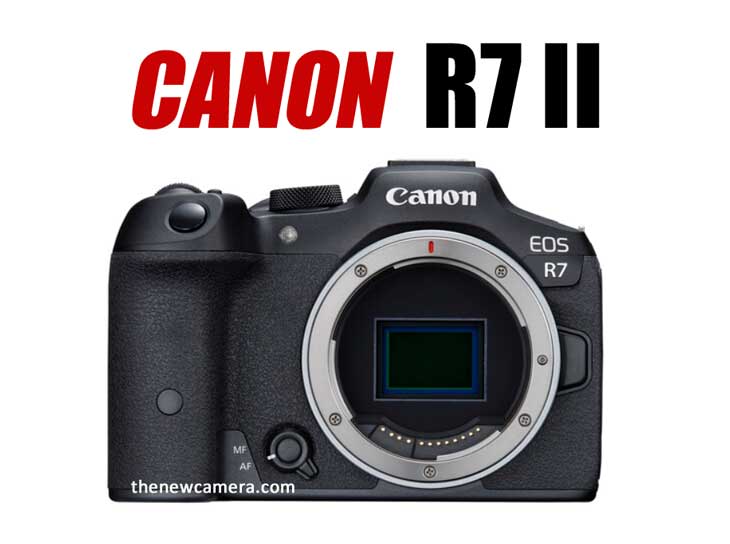
According to the latest news on the web via rumor mills, the Canon R7 Mark II camera is coming without a mechanical shutter. The successor to the Canon R7 camera will arrive in Q4 of 2025. Canon R7 series is always called as trend setter of the prosumer market, it always sets a new standard in terms of performance, usability, and practicality
A Shutterless Future for Canon APS-C Cameras?
See, the idea of ditching the mechanical shutter is not entirely new. If you have been following, then Nikon made headlines years ago by dropping the mechanical shutter in the Nikon Z8 and the Nikon Z9 camera. It did raise the eyebrows of professional photographers—those who have been using mechanical shutters for ages— but none of them have any performance quality issues.
A mechanical shutter is required when your sensor readout speed is slow. Typically, all the traditional non-stacked CMOS sensors had slow readout speed, and with the help of a mechanical shutter, the traditional readout speed gets overridden; hence, the mechanical shutter was a very essential thing, till the stacked CMOS sensors arrived in the mirrorless game.
Do Stacked CMOS Sensors Need a Mechanical Shutter?
Now, with the faster readout speed, new age sensors, technically, the stacked CMOS sensors don’t need a mechanical shutter. With faster readout speeds, these sensors minimize rolling shutter distortion, which was a key limitation of electronic shutters in the past. For example, the latest Nikon cameras, the Z8 and Z9, feature stacked CMOS sensors with a readout speed of approximately 3.73ms (1/268 second) for full-resolution RAW stills, among the fastest for HIGH RES. full-frame cameras. This speed significantly reduces rolling shutter artefacts, making mechanical shutters largely redundant for most shooting scenarios.
The Sony Alpha 9 III takes this further with its full-frame global shutter sensor, which captures all pixels simultaneously, effectively eliminating rolling shutter distortion (rendering traditional readout speed measurements irrelevant). This allows distortion-free capture at 120fps for stills and in high-speed video modes like 4K/120p, without the need for a mechanical shutter.
Mechanical shutters are no longer critical for exposure control in these cameras; they still have some use, however, and can serve a secondary purpose: protecting the sensor from dust and debris when the camera is powered off or during lens changes. For example, the Nikon Z8 and Z9 incorporate a sensor shield that closes when the camera is off, addressing this concern without requiring a traditional mechanical shutter.
List of Shutterless Mirrorless Cameras 2025
| Brand |
Model |
Sensor |
Resolution |
Burst Rate (Electronic Shutter) |
Release Status |
| Nikon |
Z9 |
Full-Frame Stacked CMOS |
45.7MP |
20fps (RAW), 120fps (11MP JPEG) |
Released (2021) |
| Nikon |
Z8 |
Full-Frame Stacked CMOS |
45.7MP |
20fps (RAW), 120fps (11MP JPEG) |
Released (2023) |
| Sony |
Alpha 9 III |
Full-Frame Global Shutter CMOS |
24.6MP |
120fps |
Released (2023) |
| Canon |
EOS R7 Mark II (Rumored) |
APS-C Stacked BSI CMOS |
32.5MP (Speculated) |
40fps (Speculated) |
Expected Q3/Q4 2025 |
Take a look at the updated list of Canon R7 Mark II expected core specifications below
- 32.5MP Stacked APS-C CMOS Sensor
- Dual Pixel CMOS AF II
- 4K 120p 10-Bit Video, HDR-PQ & C-Log 3
- External 6K ProRes RAW Recording
- 40 fps E. Shutter,
15 fps Mech. Shutter
- Sensor-Shift 5-Axis Image Stabilization
- 3.69 m-Dot OLED EVF
- 1.6m-Dot Vari-Angle Touchscreen LCD
- Sensor-Shift 5-Axis Image Stabilization
- Dual UHS-II Memory Card Slots
- Multi-Function Shoe, Wi-Fi and Bluetooth
Our Take
Mechanical shutters are expensive to produce, add complexity to camera bodies, and have a finite lifespan due to their moving parts. By going fully electronic, Canon could streamline production and potentially pass savings on to consumers. While using a STACKED CMOS sensor, Electronic shutters can also offer distinct advantages without worrying about the rolling shutter issue. Some Advantages include silent operation, faster burst rates, and higher shutter speeds (up to 1/16,000 sec on the current R7). It’s a welcome and very innovative step by Canon if the information is true.
What do you think about a shutterless R7 Mark II? Would you embrace the change, or do you prefer the reliability of a mechanical shutter? Let us know in the comments below!
At TheNewCamera.com, we’re dedicated to keeping you informed about the latest camera news. The article “Canon R7 Mark II Coming without Mechanical Shutter” was published on 8:40 am, Thursday, 12 June 2025, Greenwich Mean Time (GMT) by thenewcamera.com team | Follow us on our social pages FACEBOOK | TWITTER | INSTAGRAM to get live Camera News + Canon Rumors 24X7.
source credit of the news canonrumor.com
Canon Registers Two New Cameras May 2025 Update
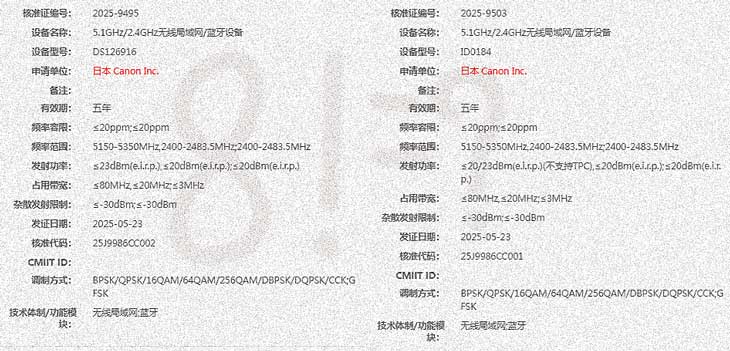
When Are Third-Party Lenses Coming for Canon RF Full-Frame Mount?
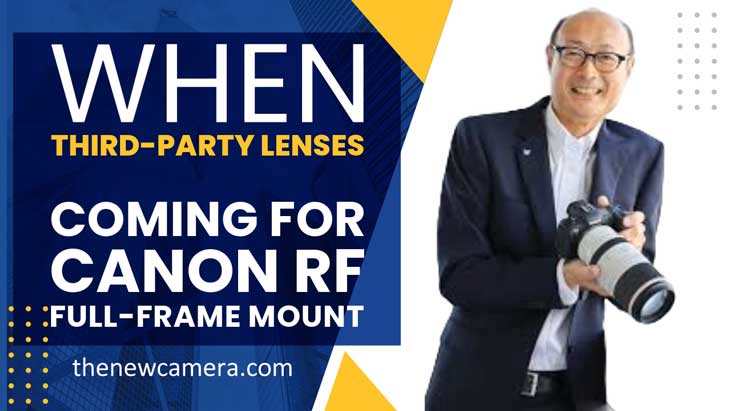
Canon Upcoming Cameras 2025

By admin, on June 11th, 2025
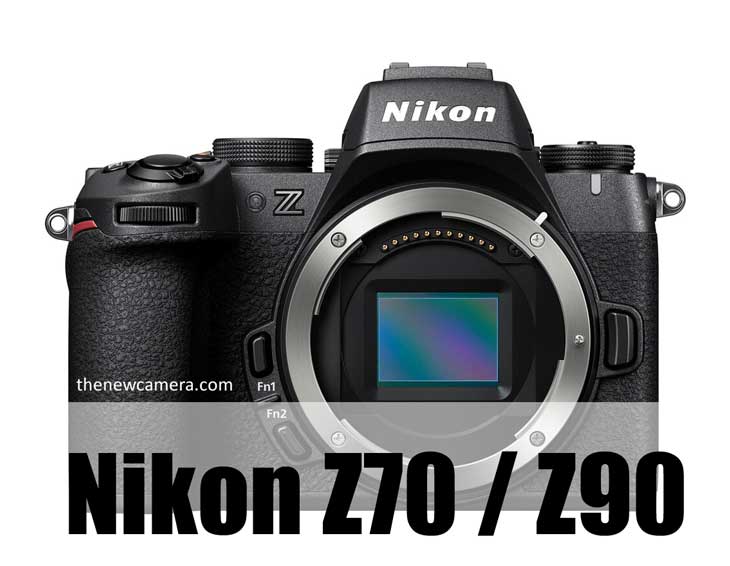
Chinese sources suggest that Nikon’s mysterious model is coming this year. So far, we know that the Nikon Z9 Mark II, Nikon ZR, Nikon Z7 III, and Nikon Z Video cameras are in the announcement pipeline. At the very same time, Nikon is also planning multiple cinema-related announcements. Based on Nikon’s announcement patterns and current rumors, several cameras are expected in late 2025 and early 2026. Take a look list of upcoming cameras
Nikon Upcoming Camera List
| Year |
Month |
Camera Model |
Status |
| 2025 |
Late 2025 |
Nikon ZR |
Rumored |
| 2025 |
Late 2025 |
Nikon Z video camera |
Rumored |
| 2026 |
Early 2026 |
Nikon Z9 II |
Rumored |
| 2025-26 |
Q4 2025 |
Nikon Z7 III |
Rumored |
| 2025-26 |
Q4 2025 – Q1 of 2026 |
Nikon Z30 II |
Rumored |
As in the table, you have seen all possible lists of cameras in BOLD, those that are expected to arrive. So, what else can we expect from Nikon? Nikon Z70 or Nikon Z90?
It, almost confirmed now, Nikon is gearing up for the professional ZR series camera, we can expect the introduction of ZR DX lineup of Camera in near future to offer a comprehensive video range to beginner content creators and cinematographers, but that all known to us we are not able to keep the ZR in “Mysterious Model” category.
Nikon ZR DX Range
Video Dedicated DX Mirroless Camera Announcement on its WAY? We already have the Sony ZV series lineup for beginner cinematographers and content creators. Canon recently announced their first V series camera, the Canon R50V., its logical to expect the same kind of move from Nikon. In the entire DX lineup, we have only one camera for content creators, the Nikon Z30, which badly needs an update if Nikon wants to keep a revenue share in entry entry-level content creator market. Apart from this, Nikon Z30, all the DX and FX lines of cameras are made for HYBRID SHOOTERS.
Nikon Z70 / Z90
None of the Nikon APS-C DX Mirrorless camera bodies have IBIS inside them. We do not have any pro model in the Nikon DX lineup after the Nikon D500, the Nikon D500 was announced back in January 2016 and discontinued in January 2022.
Over the past year, we have been getting strong hints about the development of the Nikon Z70 / Z90 camera, and one of the prototypes of the DX Z Mirrorless bodies is also being tested with Global shutter sensors. Be assured, Nikon will not put the Global shutter sensor-based cameras in the market; they will initially use partially or fully stacked CMOS sensors around a 26- 32MP Range paired up with the latest generation of Expeed image processors. Although we are waiting for more confirmation on the set of information we received a while ago.
So, these two are the possibilities under the hood of the Nikon Mysterious Model. What are you waiting for? Which specific model, let me know in the comments box
Stay tuned for more updates coming
Follow us on our social pages, FACEBOOK | TWITTER | INSTAGRAM, to get live Nikon News + Nikon Rumors 24X7.
source NR.com
Nikon ZR coming in Q4 of 2025

Nikon Z7 Mark III Leaked Specifications: Is the Rumored Camera Real?
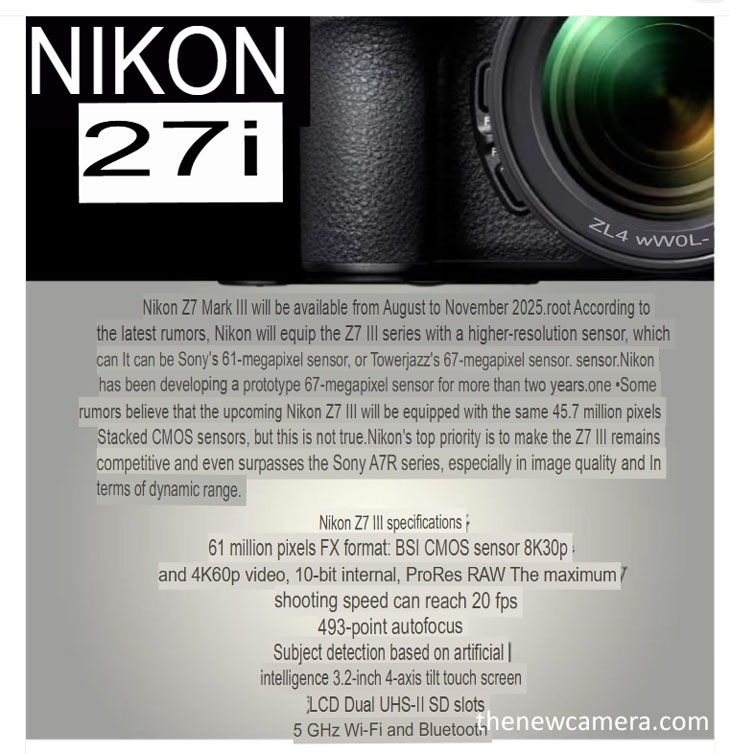
By admin, on June 11th, 2025

Nikon issued a major firmware update to the Nikon Z8 Camera, firmware 3.0, a free update packed with powerful new features and performance enhancements for our compact pro model. Designed to help you get even more out of your Z8, this update brings major upgrades across photography, video, and workflow.
1. World First – Pixel Shift + Focus Shift Technology now in Nikon Z8
The Z8 is now the world’s first camera to combine pixel shift with focus shift or pixel shift with auto exposure bracketing into your workflow. This unlocks both greater depth of field and resolution, perfect for commercial, fine art, and architectural photography. Using Nikon’s NX Studio software, you can merge pixel shift clusters. Then stack focus layers using your preferred software to create images with clarity and resolution up to 180 megapixels. Pixel shift also reduces moray, improves color accuracy, and lowers noise, giving you cleaner, more detailed results. With pixel shift and AE bracketing, the Z8 creates a pixel shift cluster at every exposure bracket, which you can then merge for high resolution and enhanced dynamic range.
2. Enhanced Autofocus: Precision and Speed
Autofocus gets a boost, too. Expanded custom wide area AF options can now be set completely at the edge of the frame and with smaller increments for more precise design of your AF point. To help you nail focus, there’s now a onetouch 400% magnification option, plus a builtin focus limiter that lets you define near and far focus ranges, speeding up autofocus and helping the camera lock on more efficiently.
3. Creative Control: Flexible Color Picture Profiles
Firmware 3.0 puts your creative intent front and center with new compatibility with flexible color picture controls. Import NP3 files created in NX Studio. Load them onto your Z8 and shoot with your custom looks applied in real time, capturing your vision exactly as you see it. For filmmakers shooting in an log, a more accurate view assist now displays enhanced highlights and contrast that more closely resembles our new Rec 709 L.
4. Workflow Upgrades: Voice Memos and Networking
For photojournalists, you can now record voice memos using an external mic for clear audio annotations even on the move. This update also makes the Z8 fully compatible with Nikon’s powerful advanced networking solution, NX Field. With NX Field, you can trigger and control up to 10 remote cameras via LAN. Adjust nearly every setting remotely and send files directly to an FTP server. Ideal for sports, news, and event coverage.
5. Download Nikon Z8 Firmware 3.0 Now
These updates redefine what’s possible with the Z8, whether you’re in the studio or out in the field. Download firmware 3.0 soon on Nikon’s website or through the Snapbridge app and start exploring what’s new.
Click here to explore more about Nikon Z8 3.0
Get you Nikon Z8 From Here – online B&H Store | Adorama | Amazon.com |
See more Nikon Z8 Comparison – – Panasonic S1R II vs Nikon Z8 | Nikon Z8 vs Leica SL3-S
Nikon added Shutter angle and Waveform Monitor in Nikon Z6 III and Nikon Z8
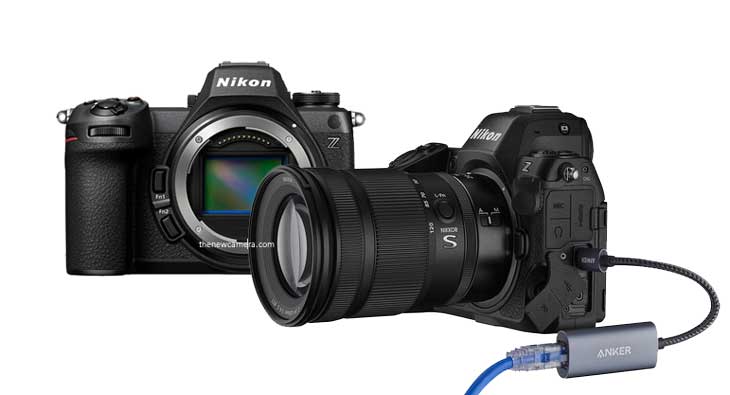
By admin, on June 10th, 2025
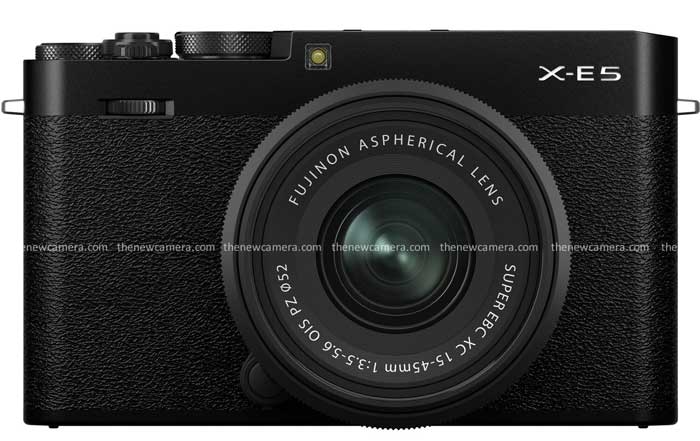
We have first shared the Fuji X-E5 expected core Specification in our May 2021 Post too, you can check here. Now, it’s almost confirmed that the camera is coming with the same core specs. With no updates from the rumor mill’s reliable sources, it’s confirmed that the upcoming Fuji X-E5 camera will feature a 40 MP X-Trans CMOS sensor and IBIS unit. Take a look at the detailed core specification of the upcoming camera
Fuji X-E5 specification
- 40MP BSI CMOS APS-C sensor
- Image stabilization rated to 7.0EV
- Twin clickable command dials
- Film simulation dial with ‘recipe’ option
- 2.36M dot EVF
- 1.04M dot rear up/down tilt LCD
- Video up to 6.2K//30 (with 1.23x crop)
- Continuous shooting up to 8fps, 13fps with e-shutter
- Mic socket, headphones via USB
Updated Specification and Pricing of the Fuji X-E5 Camera
- Pricing for the X-E5 is as follows
– Body: $1699
– Kit with XF23mmF2.8: $1899
- Key specifications of the X-E5-
Sensor: X-Trans CMOS 5 HR, APS-C, 40.2 megapixels-
Processor: X-Processor 5-
ISO sensitivity: Standard 125-12800, extended 64-51200-
In-body image stabilization: Up to 7.0 stops (center), 6.0 stops (periphery) IBIS system with new algorithm and improved gyro sensor for improved performance-
Continuous shooting: Up to 20fps with electronic shutter (with crop)
– Video: Up to 6.2K 30p, DCI4K60p, Full HD240p slow motion-
EVF: 0.39-inch OLED, approx. 2.36 million dots-
LCD monitor: 3.0-inch tilt-type touch panel, approx. 1.04 million dots-
Dimensions: Width 124.9mm, height 72.9mm, depth 39.1mm-
Weight: Approx. 445g including
battery- Film Simulation: 20 modes in total, up to 3 custom recipes can be saved-
Other: USB-C, Bluetooth 4.2, Wi-Fi, 3.5mm microphone terminal-
Supports digital teleconverter (1.4x / 2x)
– Customizable film simulation dial allows you to quickly recall your own settings-
EVF has multiple display modes, providing an optical viewfinder-like experience: three “Surround View” modes with a choice of black, semi-transparent or line outline showing the image aspect ratio and its surroundings, and a “Simple View” option that mimics the viewfinder of an analog film SLR- Equipped
with AI subject detection AF, AF possible down to -7EV in low light-
Beautifully machined aluminum top plate-
Bluetooth connection button is located on the bottom like a film rewind button
Fuji X-E5 Arrival Time and Price
Fuji X-E5 is coming on June 12, 2025. The price is expected to be $1299, $1699 approximately
Follow us for more updates and Get LIVE RUMORS –> FACEBOOK | TWITTER | INSTAGRAM to get live news — > get live news + –> See More Fuji Rumors
source FR.com
By admin, on June 9th, 2025
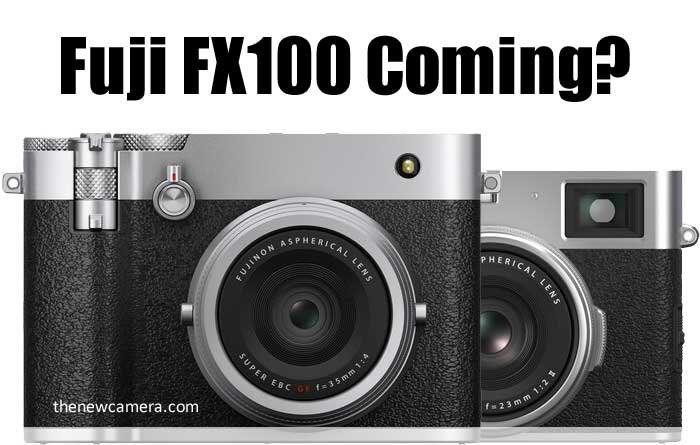
Fuji has a long history in creating amazing cameras, starting from the APS-C line of cameras and the medium format GFX series, all of which deliver exceptional image quality and retro aesthetics.
The Fuji X-100 VI camera with its 40 megapixel sensor has very high demand worldwide, and most of the time, due to the supply chain issues, the camera remains backordered. Fuji recently announced their first medium format compact camera, the GFX 100 RF, which uses a 102 megapixel medium format sensor-based camera. Both of them showcase Fujifilm’s ability to innovate in the premium compact camera space.
However a new patent surfaced over the web of 40 mm F2 full frame compact lens the lens is specifically designed for a full frame sensor it has sparked an intense speculation about a new addition to Fujifilm in a full frame compact camera, may be to complete against the existing like a Leica Q3 with approximately the same focal length having name the Fuji FX 100. And We do believe that the Fujifilm FX100 could be Fujifilm’s answer to the Leica Q3, as they already possess all the capabilities required to create a retro full-frame compact camera.
Let’s explore the POSSIBILITIES of the arrival of the Fuji FX100 full-frame compact camera.
Fujifilm’s History and Stance on Full-Frame Cameras
Fujifilm has long charted its own course in the mirrorless world, choosing to double down on its beloved APS-C “X” line and its high-end GFX medium-format system rather than wade into the full-frame fray. As recently as 2023, during INTERVIEWS, they have CLEARLY SAID that they have no plans to enter the crowded full-frame interchangeable-lens mirrorless market dominated by Canon, Nikon, and Sony. Their reasoning is clear: APS-C (X Series) offers a compact, cost-effective alternative, while medium format (GFX Series) provides superior resolution and dynamic range for professionals. Building a FULLFRAME interchangeable LENS system from scratch means designing new mounts and glass, then convincing photographers to invest in yet another lineup, possibly at the expense of their current X and GFX customers. It’s a risky move that could or may end up cannibalising their lineup of GFX and Z series cameras.
That said, Fujifilm isn’t ruling out playing in the full-frame sandbox entirely—a fixed-lens full-frame compact camera, as we have discussed above the Fiji FX100, would not contradict Fujifilm’s stance. It would be a distinct product category, akin to the Leica Q3 (60MP full-frame sensor, 28mm or 43mm f/1.7-2 lenses) or Sony RX1R II (42MP full-frame, 35mm f/2 lens): FX100 will let them dip a toe into full-frame territory without overhauling their entire lens portfolio. It’s a smart way to test the waters—pairing their signature film simulations and sleek design with a full-frame sensor, while staying true to the systems their users already know and love.
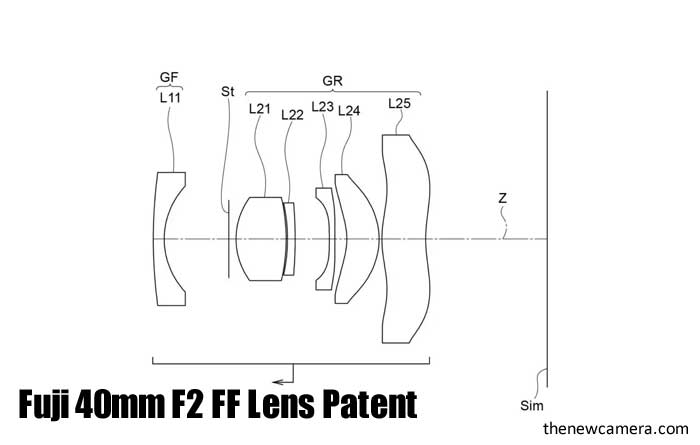
Fuji 40mm f/2 Full-Frame Lens Patent
Back in June 2025, Japanese website ASOBINET spotted something intriguing in Fujifilm’s patent filings: alongside new GF 20mm f/2.8 and XF 15mm f/2.8 designs, there was a 40mm f/2 lens specifically laid out for a full-frame sensor. That little detail is probably the strongest hint yet that Fuji is toying with the idea of a full-frame compact. A 40 mm normal-view optic makes perfect sense here—it’s roughly the classic field of view you’d get with Leica’s Q3 at 43 mm f/2, so it’s equally happy capturing street scenes, travel snaps, or environmental portraits. And unlike lugging around a monster telephoto, a 40 mm f/2 can stay snug and pocketable without sacrificing speed or sharpness.
Of course, patents aren’t product guarantees—they’re often filed just to stake an R&D claim or to keep rivals at bay. But the timing, right after the buzz over the X100VI and GFX100RF, and the very specific full-frame design all point to the fact that Fujifilm is taking the compact full-frame space seriously. If it does materialize, this camera could sit squarely between the Leica Q3 (around $6,660) and the still-cherished Sony RX1R II ($3,300-ish on the used market), offering Fuji’s renowned film simulations, sleek styling, and top-tier image quality in a pocket-friendly package.
Fuji FX-100 will be a Sweet Spot in the Fuji Lineup
Think of the FX100 as the “sweet spot” in Fujifilm’s family. It wouldn’t step on the toes of the X100VI or GFX100RF—instead, it fills the gap between them. The X100VI is beloved by street shooters and travel photographers for its APS-C sensor and fixed 35 mm-equivalent lens, while the GFX100RF is built for pixel-peepers, packing a 102 MP medium-format sensor and a 28 mm-equivalent f/4 optic. A full-frame FX100 would bridge those worlds: better low-light performance and greater dynamic range than the X100VI, and a faster lens and smaller body than the GFX100RF.
Fuji FX100 – Expected Core Specifications
- 42–61MP Full-Frame BSI CMOS Sensor
- Fixed 40mm f/2 Lens with Nano-GI Coating
- 6.2K30, 4K60 & 4:2:2 10-Bit Video, F-Log2 Support
- AI-Based Phase Detection Autofocus with Subject Tracking
- In-Body Image Stabilization (6–7 Stops)
- Hybrid OVF/EVF with 5.76M-Dot OLED Panel
- 3.15″ 2.1M-Dot 2-Axis Tilting Touchscreen LCD
- ISO 50–100000, Up to 15-fps Continuous Shooting
- Built-in 4-Stop ND Filter & Digital Teleconverter (50mm, 63mm Modes)
- SD UHS-II Slot; USB-C, HDMI, Wi-Fi & Bluetooth
- Retro Design with Leaf Shutter & Dedicated Exposure Dials
- Weather-Sealed (Likely IP52 Rating)
- Estimated Price: $2,000–$3,000
See, the possibility of the Fuji FX100 camera does exist, and it has been fueled by the latest June 2025 patent of the 40mm f/2 full-frame lens by Fujifilm itself. They already have a decent, proven track record of building premium compact cameras with the success of the Fuji X100 series and the recently announced GFX100 RF series compact camera. Now you have to understand one thing — that even if they announce a fixed-lens full-frame camera, it does not violate their stand against interchangeable-lens full-frame systems. One more thing — that Fuji’s research and development doesn’t take much time to make a patent into reality. If they really want to announce a perfect competitor to the Leica Q3 or the RX1R series, they won’t take much time. They will for sure announce a full-frame compact camera sometime in 2026, specifically in the later part of the year. And yes, rumor mill first denies this concept of the FX100 model, and after a month or two, they will publish a breaking news “Fuji FX Compact coming”, that’s what they always do.
Stay tuned for more updates coming
Follow us for more updates and get LIVE RUMORS –> FACEBOOK | TWITTER | INSTAGRAM to get live news — > get live camera news + –> See More Fuji Rumors
At TheNewCamera.com, we’re dedicated to keeping you informed about the latest camera news. The article “Fuji FX100: The Possibility of a Full-Frame Compact Camera in 2026” was first published on11:49 am, Monday, 9 June 2025, Greenwich Mean Time (GMT) by thenewcamera.com team
By admin, on June 8th, 2025
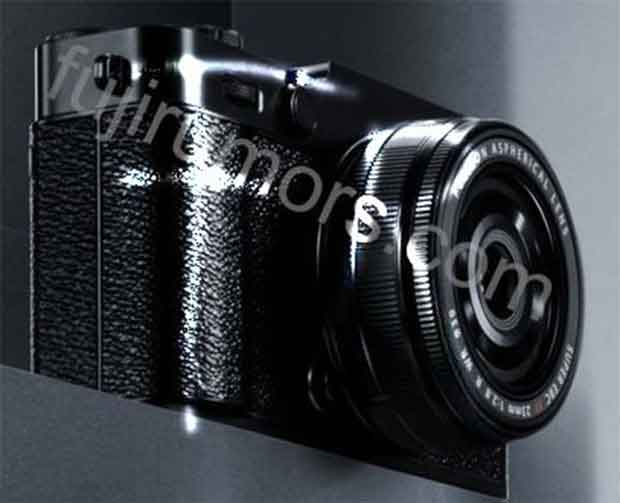
Finally, just before the official announcement of the Fuji XE5 mirrorless camera, we leaked images via the rumour mills. Today is June 8, and on June 12, the camera will become official. But even before that, let me remind you: We were the first website to publish the core specification of the upcoming Fuji XE5 camera. And as you have seen and witnessed, the sensor resolution and the IBIS system—all we mentioned months ago—came to be true.
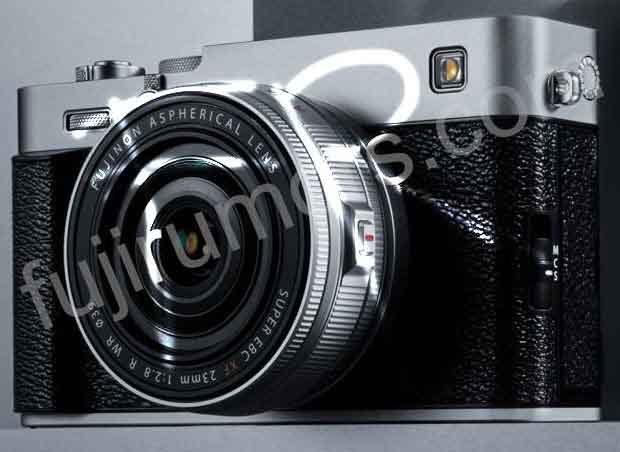
Fuji X-E5 specification
- 40MP APS-C X-Trans CMOS 5 HR Sensor
- 4K Video Recording at 60p, 6.2K at 30p (4:2:2 10-Bit)
- In-Body Image Stabilization (IBIS)
- 425-Point Intelligent Hybrid Autofocus System
- 3.69m-Dot OLED Electronic Viewfinder
- 3″ 1.84m-Dot Tilting Touchscreen LCD
- 20 fps Electronic Shutter, 15 fps Mechanical Shutter
- 160MP Pixel Shift Multi-Shot
- Bluetooth and Wi-Fi Connectivity
- ProRes & Blackmagic RAW via HDMI
+ MORE details by rumor mills
The return of the MCS switch like the X100VI
– A viewfinder selector similar to the X100VI, which we believe functions similarly to the one on the GFX100RF
– There is a small grip, unlike the flat front of the X-E4
– The strap hardware has returned to a traditional one instead of the big rectangular one on the X-E4
– The small wheel on the left side is probably the diopter adjustment dial
– The “X-E5” logo on the left side of the front is gone, replaced by a square AF assist light. Honestly, we welcome this decision
– Clearly the most beautiful camera in the XE series to date
Follow us for more updates and get LIVE RUMORS –> FACEBOOK | TWITTER | INSTAGRAM to get live news — > get live camera news + –> See More Fuji Rumors
source / image credit FUJI RUMORS.com
By admin, on June 7th, 2025
Sigma is working on super zoom lenses, the latest patent revealed that Sigma is working on a pair of 800 mm lenses. One of the lenses is 400 to 800 mm with a constant f/8 aperture, and the other is 180 to 800 mm with f/5.8 – 8.4 aperture. From the optical construction, it is very clearly visible that they are trying to make more compact super zoom lenses, which are easy to carry and fall in the budget pocket range.
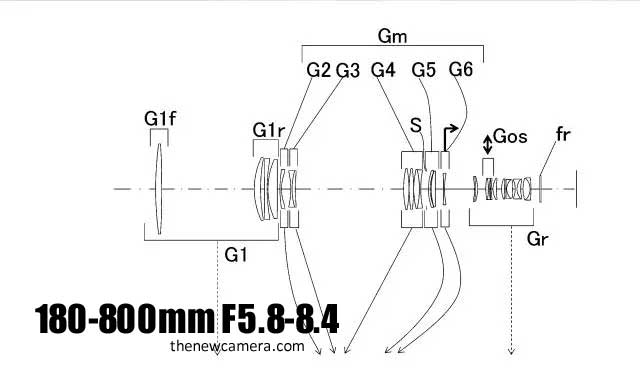
Examples include 800mm zoom lens optical systems such as the 400-800mm F8 and 180-800mm F5.8- 8.4. Although the maximum aperture is large, the overall length is shorter than the 300-600mm F4, making it more portable.
The article “Sigma Developing Two 800mm Super Zoom Lenses – Sigma Latest News” was published at 8:23 am, Saturday, 7 June 2025, Greenwich Mean Time (GMT)). By thenewcamera.com Team. You can Follow us on our social pages FACEBOOK | TWITTER | INSTAGRAM to get live Camera News + + Sigma Rumors 24X7.
source / credit asobinet japan
Sigma 17-40mm F1.8 Lens Coming for APS-C Mirrorless
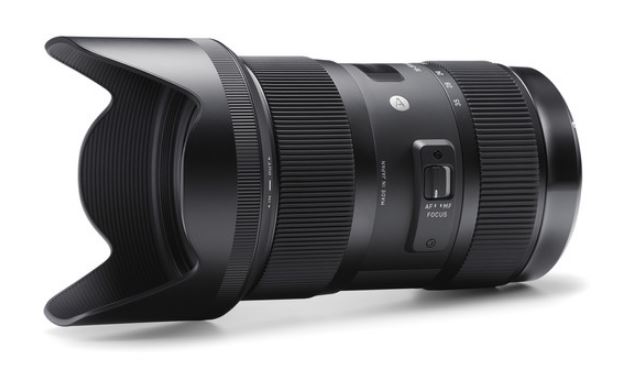
Sigma RF-S Lenses Coming June 2025: 17-40mm F1.8 & 12mm F1.4 for Canon APS-C
|
KEEP THIS BLOG ALIVE - Support New Camera Buy Canon Lenses, Buy Music CD or Digital Camera at amazon it helps this site, and you do not pay anything extra, it is just a way to help support this site.

|






















